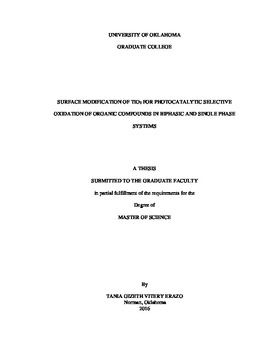| dc.description.abstract | Living style of human kind in this era has a large dependence on energy and petroleum based products. As the population grows; the world’s fossil fuels, minerals, and natural resources are being depleted. Currently, as many nations are developing and new markets and economies are emerging, the need for the development of new products is becoming a critical factor to increase the standard of living. Furthermore, environmental and political concerns regarding pollution and global warming, motivate the search for new and innovative routes for the synthesis of chemicals in a sustainable and environmentally friendly manner.
The catalytic oxidation of cyclohexane is a worldwide chemical process used for the synthesis of KA oil (mixture of cyclohexanol and cyclohexanone). KA oil is then used as raw material for the production of caprolactam and adipic acid, which are precursors to nylon 6 and nylon 66. A sustainable, non-conventional, and environmentally friendly route for this chemical process is the liquid phase photocatalytic selective oxidation of cyclohexane using TiO2 as catalyst.
The effect of several factors on the reaction activity and selectivity have been extensively investigated. Some factors include, reaction solvent, oxygen flow bubbled throughout the reaction, light wavelength, particle size and crystal phase of the catalyst, and surface modifications of the catalyst (surface silylation and ion doping). Although the use of TiO2 to selectively oxidize cyclohexane to cyclohexanol and cyclohexanone has been a popular research topic, fast deactivation and therefore low conversion have been found to be the two major drawbacks. Research studies have concluded that strongly adsorbed intermediates and products such as cyclohexylperoxides, cyclohexanol, and especially cyclohexanone are further oxidized to carboxylates and carbonates, which are responsible for the fast deactivation of the TiO2 surface. It was also found that a superior photocatalytic performance is obtained by enhancing the rate of desorption through surface silylation of TiO2. Even though, the hydrophobic catalyst promoted the desorption of the reaction intermediates that have strong polar affinity to the surface, it did not retain its hydrophobic nature under the photocatalytic reactions conditions.
In this work, two different approaches were followed in order to enhance the stability of the hydrophobic catalyst. In the first approach, a catalyst named as TiO2@mSiO2 + OTS was synthesized. This catalysts consists of a mesoporous silica shell covering TiO2 nanoparticles, and then hydrophobized by treatment with OTS. In the second approach, the catalysts, TiO2/mSiO2 + OTS, was synthesized by impregnating TiO2 onto mesoporous silica, and then hydrophobized by treatment with OTS. Both approaches use mesoporous silica to protect the hydrophobic functional groups as well as to significantly increase the surface area of the catalyst. Mesoporous silica was used in order to guarantee good accessibility of the molecules to the active site (TiO2). As thoroughly explained in the results and discussion section, the catalyst TiO2/mSiO2 + OTS significantly outperform the catalytic behavior of TiO2@mSiO2 + OTS.
In order to provide fairly detailed information about the structure and functionality of the catalysts, several characterization techniques were employed including transmission electron microscopy (TEM), scanning electron microscopy (SEM), Brunauer, Emmett and Teller (BET) surface analysis, Fourier transform infrared spectroscopy (FTIR), thermogravimetric and mass spectrometer analysis (TG-MS), diffuse reflectance UV-Vis spectroscopy (DR UV-Vis), and x-ray diffraction analysis (XRD). The results from the characterization techniques applied to TiO2@mSiO2 + OTS are discussed in the appendix.
Further work was initiated with m-cresol and furfural as model reaction compounds of bio-oil obtained from biomass. The main goal was to study the feasibility of using photocatalytic partial oxidation reactions with oxygenated molecules that would lead to the formation of functional groups, offering alternative routes for coupling reaction and further upgrading to fuels and fine chemicals. | en_US |
